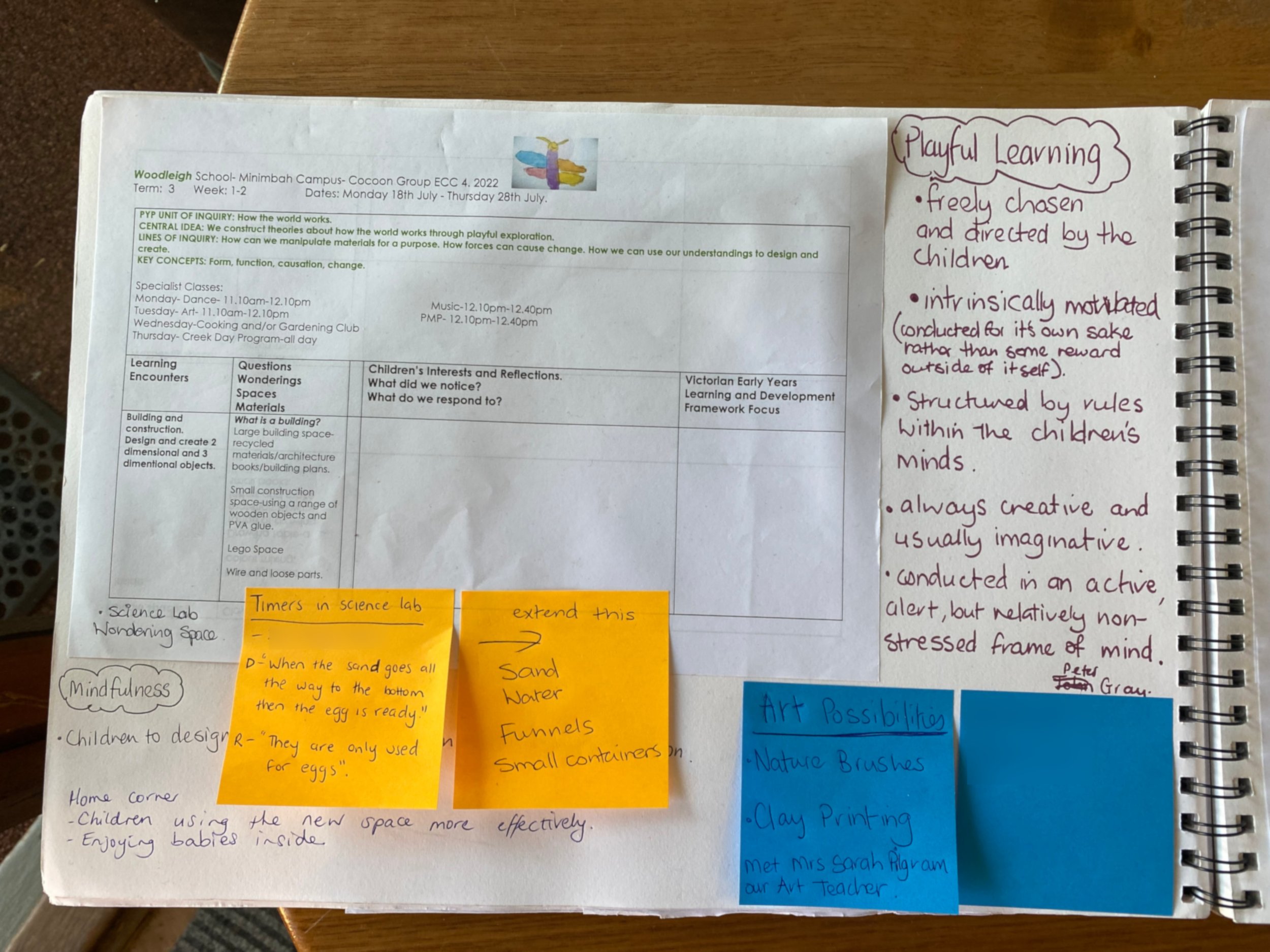Minimbah Student Art Exhibition
In July and August 2022 I completed my final 25 day funded kindergarten placement at Minimbah, one of Woodleigh School’s two primary and early learning campuses, located in Frankston South. The ECC program is inspired by the Ateliers of Reggio Emilia and operates under the International Baccalaureate Primary Years Programme (International Baccalaureate Organization, 2005).
During my time in the ECC I was able to demonstrate my understanding of how students learn, by taking responsibility for the organisation and implementation of a 4-week teaching program culminating in a student art exhibition to share the students work with their local community.
Upon arrival at Minimbah, the student’s had already begun a PYP unit of inquiry on ‘How the world works’. My mentor advised me that the children had previously shown great interest in working with clay and that she was keen for me to continue to develop this inquiry. She also asked me to consider how this may link to their theme. During a staff meeting, we discussed other areas of interest that the children had shown such as block and box construction, cubby houses and heavy lifting activities for proprioception. We also considered the school’s outdoor learning program (Creek Day) and how we could connect these interests to the schools’ environmental philosophies. The conclusion of this meeting was that we would extend the inquiry to include other materials as a provocation to explore their origins in the natural world and their uses in the constructed world.



Over the following weeks I led the inquiry into clay while the other educators and my mentor each took responsibility for wire, charcoal, and paint. We kept the experience open ended and observed the way the children interacted with the material, recorded what they noticed, and the stories that they had developed around their work, linking this learning to the EYLF Outcomes and National Quality Standards.
I made sure to keep accurate record of these statements by the children to present their voice alongside their exhibition work. I also kept observational records throughout the process of the inquiry to track how the student’s work developed, where they may need additional support and to modify my own teaching practices accordingly.



In order to incorporate indigenous perspectives and an understanding of connection to Country we introduced the students to the painted work of Sally Gabori (2022 via NGV) and asked each child to create a final piece related to their memories of ‘The Creek’. This can be evidenced by the children’s use of Indigenous language in describing and naming their works.



To establish collaborative relationships with the student’s parents and carers and to support literacy development we asked student’s to work with the educators to make an invitation to the ECC community.
Artefact 14 - Exhibition Invitation
On the day of the event, I included the students in the curation of the space. I invited them to carefully collect their clay artwork and choose the placement and orientation of display. For the charcoal drawings that they had produced we wanted to create a connection to the material’s origins, so we asked a few of the children who responded well to heavy proprioceptive work to collect logs and branches from the yard to build a pretend fireplace. This activity was helpful in redirecting some challenging behaviours at the end of a big day, as well as offering a point of pride for the students who were less interested in the artistic works on display.


The Exhibition was a glowing success, and it was incredibly rewarding to see the pride that the student’s displayed in sharing their work with their friends and family. For the students it offered a rich opportunity for learning and expression through the ‘100 languages of children’ (Malaguzzi L, 1996) and for myself as an educator, the possibility to reach the ECC community and report on student learning in a new way.

References
International Baccalaureate Organization 2005, IB Primary Years Programme, International Baccalaureate Organisation, viewed 24/08/2022, <https://www.ibo.org/programmes/primary-years-programme/>
Malaguzzi L 1996, 100 Languages: No way. The hundred is there, translated by Gandini L, viewed 24/08/2022, <Reggio Children - 100 languages>
National Gallery of Victoria 2022, Sally Gabori: Land of All, NGV, viewed 24/08/2022,<Sally Gabori: Land of All | NGV>


